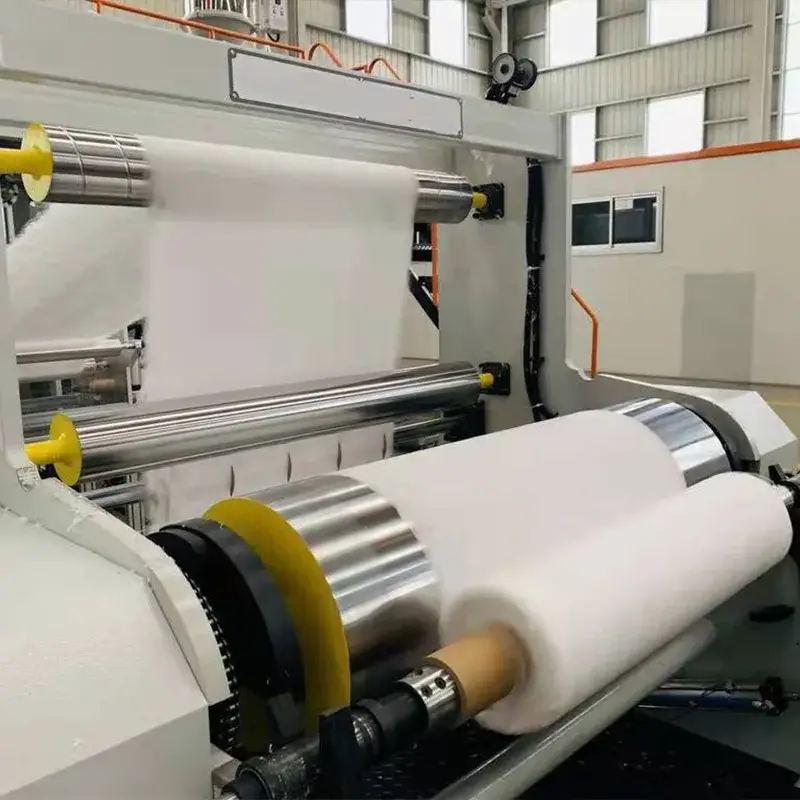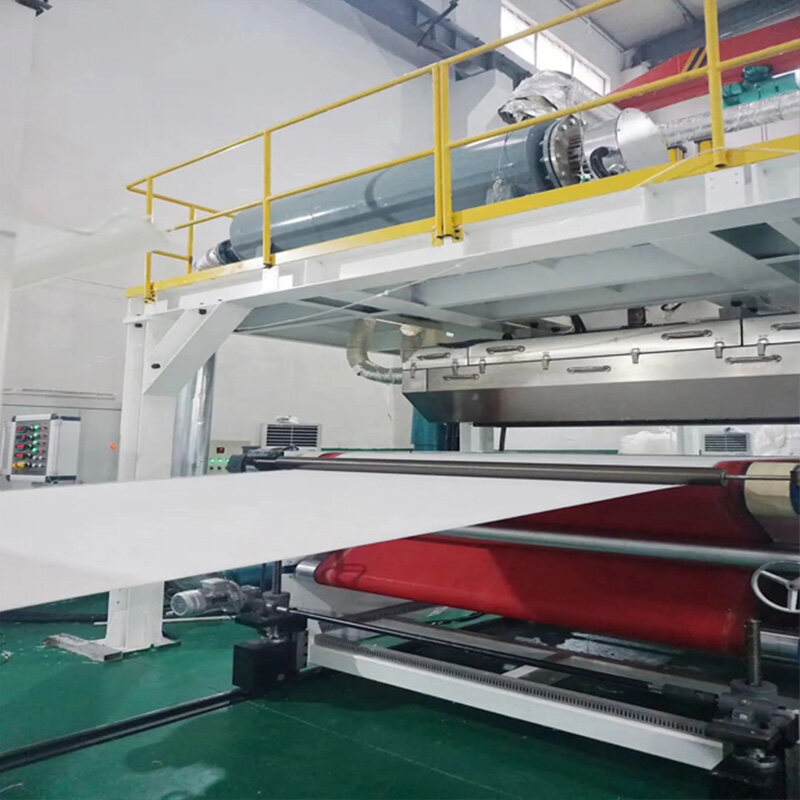6-20 个字符(仅限字母加数字)
密码不一致


PLA Extrusion Machines: A Professionals Guide
If you've been following the trend towards more environmentally friendly solutions, you've probably heard of PLA, or Polylactic Acid. This type of biodegradable plastic is made from renewable resources like corn starch or sugarcane, and it's making a big impact on how companies approach sustainability. PLA extrusion machines are crucial for turning this eco-friendly material into practical products like packaging, fibers, and medical devices. In this article, I'll explain everything you need to know about PLA extrusion, why it's important, and how to choose the right machine for your business.
What is PLA and Why is It Important?
The Rise of PLA in Manufacturing
PLA has been a game-changer in industries ranging from packaging to medical devices. It’s not just another plastic; it's made from renewable resources, and more importantly, it's compostable. Unlike traditional petroleum-based plastics like PET, PLA breaks down naturally when disposed of, which makes it much easier on the environment. This is especially important as companies look for ways to reduce their carbon footprint and meet sustainability goals.
For example, many companies in the food packaging industry are turning to PLA for their single-use containers, especially for items like salad bowls and cutlery. Some of the biggest fast-food chains and food delivery services now use PLA-based containers for their takeaway packaging to align with their sustainability goals.
Benefits of Using PLA
Why should you consider working with PLA? For one, it’s a biodegradable material, which means that it breaks down in industrial composting systems. Second, it's made from plants, not petroleum. So, using PLA means you’re not just reducing the reliance on fossil fuels, but you’re also supporting a more sustainable, renewable source of material.
From a practical standpoint, PLA has great properties. It’s strong, lightweight, and flexible. It’s perfect for applications ranging from packaging to medical devices. The biggest selling point? Eco-friendly businesses and consumers are increasingly demanding sustainable products, so switching to PLA could give you a competitive edge in the market.

What is PLA Extrusion and How Does It Work?
The Extrusion Process Explained
In simple terms, extrusion is the process of shaping a material by forcing it through a mold or die. For PLA, this involves heating PLA pellets until they melt, and then using a machine to form them into sheets, films, fibers, or even complex 3D shapes.
At the heart of any extrusion process is the extruder—this machine uses a rotating screw to push the PLA pellets through a barrel. As the pellets travel through the barrel, they're gradually heated and melted. Once the material reaches the right temperature and consistency, it’s pushed through a die, which shapes it into the desired form.
The cool thing about PLA extrusion machines is that they can produce such a wide range of products. Whether you’re creating biodegradable packaging, fibers for textiles, or even medical-grade products, the extrusion process is flexible and customizable.
Types of PLA Extrusion Machines
When it comes to PLA extrusion machines, not all are created equal. There are generally two main types:
-
Single Screw Extruders: These are simpler machines with a single screw that pushes the material through the machine. They're great for small to medium-scale production and are typically more affordable, making them a popular choice for startups or smaller businesses.
-
Twin-Screw Extruders: These machines use two intermeshing screws to push and mix the material. They are more efficient than single-screw extruders, offering better consistency, higher throughput, and the ability to process more complex PLA blends. These are ideal for larger-scale operations or more intricate applications where precision is key.
Key Components of a PLA Extrusion Machine
The Extruder Screw
One of the key components in a PLA extrusion machine is the extruder screw. The screw is responsible for driving the PLA pellets through the barrel and melting them. The design of the screw—especially its compression ratio and length—plays a significant role in how well the machine performs. A well-designed screw ensures that the material is melted evenly and efficiently, which leads to a smoother extrusion process.
In my experience, businesses often overlook the importance of a quality screw design. A poorly designed screw can lead to inconsistent output and higher energy consumption. So, always make sure that your machine’s screw design matches your production needs.
The Barrel and Heating Zones
The barrel is where the PLA pellets are heated and melted. It’s equipped with multiple heating zones to ensure the material is brought to the right temperature gradually and evenly. Having precise control over the temperature in each zone is crucial for achieving consistent quality in the final product.
For instance, if you're producing PLA sheets for packaging, getting the temperature right is critical because inconsistent heating can cause defects, such as bubbles or uneven thickness. So, make sure you opt for a machine with high-quality temperature control systems.
The Die
Finally, the die shapes the melted PLA into its final form. Dies come in various shapes and sizes, depending on the product you're making. For example, film dies are used for making films and sheets, while fiber dies are used for spinning fibers for textiles.
The die design is important for achieving the desired properties of the final product, such as thickness, surface texture, and flexibility. If you’re producing products for the medical or food industries, precise die design is essential for meeting safety and quality standards.
Advantages of PLA Extrusion Machines for Manufacturers
Cost-Effectiveness
The right PLA extrusion machine can save you money in the long run. These machines are built to last, with robust designs that minimize downtime and maintenance costs. Additionally, extrusion is one of the most cost-effective manufacturing processes when it comes to mass production.
For example, I spoke with a client who was looking to scale up their production of PLA packaging. They chose an efficient twin-screw extruder that significantly increased their throughput while maintaining the quality of their products. They found that the initial investment paid off quickly due to the higher volume and reduced operational costs.
Flexibility and Customization
PLA extrusion machines offer excellent flexibility—you can adjust the settings to produce a wide variety of products. Whether you need thin films for food packaging or thicker sheets for medical use, PLA extrusion allows you to customize the material properties to meet specific demands. This flexibility also allows manufacturers to enter new markets and diversify their product range.
For instance, many companies are now experimenting with PLA-based fibers for textiles. PLA has excellent strength and stretchability, making it an attractive material for producing clothing or accessories. Extrusion machines are adaptable enough to handle these changes, which is why they are a solid investment for companies looking to innovate.
Choosing the Right PLA Extrusion Machine
Factors to Consider
When choosing a PLA extrusion machine, there are several factors you need to consider:
- Production Capacity: How much output do you need? Make sure to select a machine that matches your volume requirements.
- Material Versatility: Will the machine handle different grades of PLA or other materials? Some extrusion machines are more versatile than others, allowing you to process a variety of bioplastics.
- Automation and Control: How much control do you need over the process? More advanced machines come with automation systems for easier operation and higher precision.
Price vs. Quality
While price is an important factor, it’s essential not to compromise on quality. Opting for the cheapest machine may save you money upfront, but it could lead to more maintenance costs and lower production efficiency in the long run. Always look for a balance between cost and reliability.
Future Trends in PLA Extrusion Technology
Innovations in PLA Extrusion
Technology is always improving, and so is the PLA extrusion process. New advancements in machine efficiency, speed, and energy consumption are making PLA extrusion even more cost-effective. Machines are now being designed to use less energy while producing more output, which is a huge benefit for businesses focused on cutting operational costs.
The Impact of Sustainability on the Market
As consumers and companies demand more sustainable products, the market for PLA is set to grow exponentially. PLA extrusion machines are playing a key role in meeting this demand, helping manufacturers scale production and reduce waste.
Conclusion
PLA extrusion machines are leading the way in sustainable manufacturing by enabling businesses to create eco-friendly products that reduce plastic waste and carbon emissions. When selecting a PLA extrusion machine, it's important to consider factors such as production capacity, efficiency, and cost to ensure it meets your business requirements.
If your company wants to go green and produce sustainable products, JINXIN is a reliable manufacturer of top-notch PLA extrusion machines. Their machines are built to be dependable, efficient, and adaptable, making them ideal for businesses aiming to lead in the eco-friendly industry.

